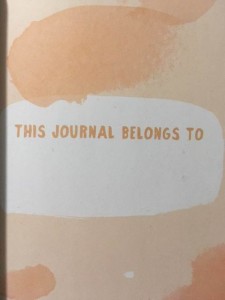Early in grade school, a concerned teacher notified my mother of a problem I had with communication. This problem, the teacher warned, would need to be corrected or I’d continue having great difficulty making myself understood.
The issue wasn’t crippling shyness or dyslexia or a speech impediment.
The issue was my handwriting. I had terrible handwriting.
I practiced as ordered, struggling to compose words as pretty as the other girls’, who wrote with perfect slants and even letters, daring loops and adorable quirks, dotting their i’s with hearts or little bubbles, pinning their confidence onto the page with flourish.
Maybe I tried too hard, or maybe I was in such a rush to express myself in written words the words tumbled out too fast, spilling into each other and rising and falling to the rhythm of my thoughts.
Maybe the problem is the way I hold my pencil, which I realized only as an adult was different from the way most people hold theirs (not resting lightly between my index finger and thumb but squeezed between thumb and ring finger, my hand pulled nearly into a fist).
Despite all efforts to improve my penmanship, it honestly remains deplorable. Sometimes even I have a hard time reading it. Anything I write that looks pretty on paper looks that way because I wrote it twice, the original version crumpled up and tossed away.
Maybe this is why I have so many blank journals.
Because aren’t journals wonderful? I suppose it’s ironic that I could happily spend hours lingering in the part of the bookstore that sells books with blank pages. But I love the promise of those pages–smooth bare sheets waiting to be filled with thoughts, ideas, memories, and stories. That’s always my intention, of course. To fill them in, to stamp their unbroken surface as merrily as a child stamps through a surface of unbroken snow.
Most of the time I can’t bring myself to do it. When it’s time to put my thoughts to paper, I might reach for one of those tempting journals on my bookshelf, the ones I couldn’t help but slip into my shopping basket while out buying birthday presents or school supplies. I might even pull one off the bookshelf, flip carefully through it, imagine pressing a pen to one stone-white page and filling it with my scrawled and uneven script.
Inevitably I put it back, choosing instead a yellow legal pad or a plain old spiral notebook. And I suppose that’s fine—what matters is that the writing happens.
Still, there’s something wistful about those beautiful journals on my bookshelf that remain unmarred, their spines unbroken, their pages still smooth and smelling of new paper, and of promise.
Perfect, and perfectly empty.














Connect With Me